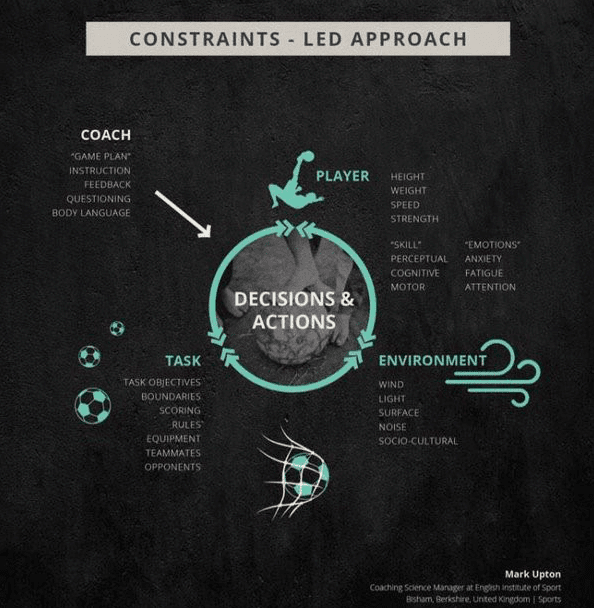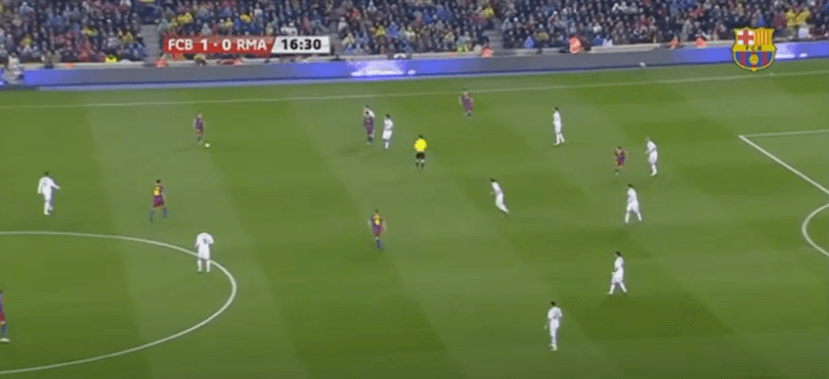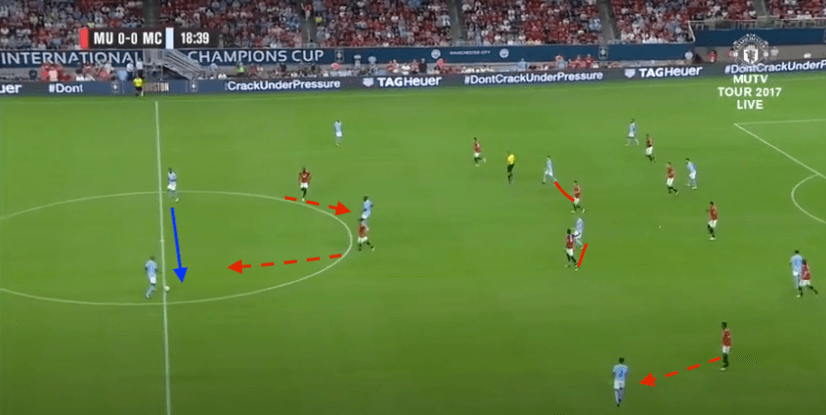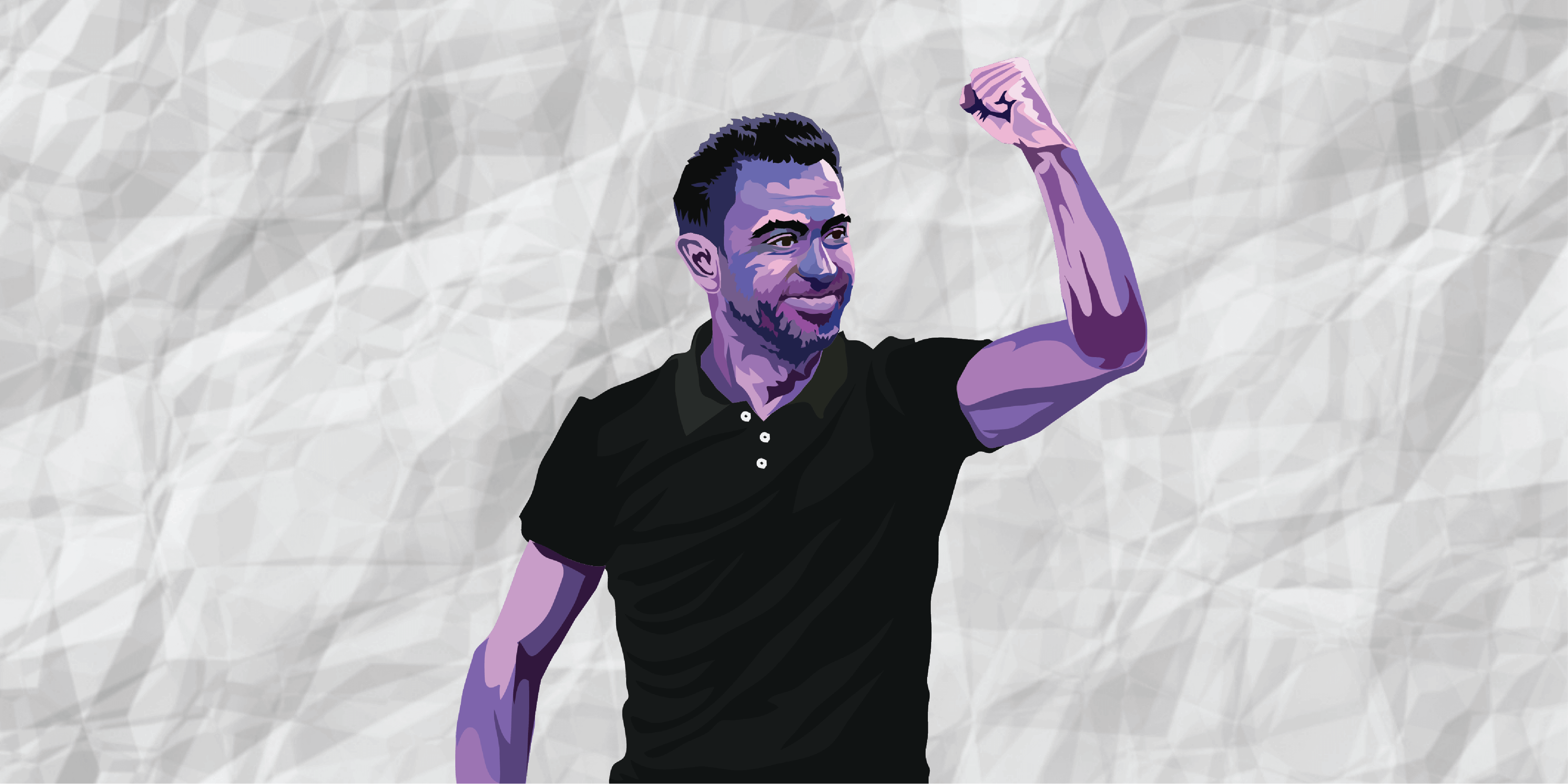I’ll give you a moment to think about your favourite team or your favourite player. Have you thought of them? Great. Now think about a moment that you just thought to yourself “Wow! How on earth did they pull that off?” It could have been a team building up from the back and finishing off with a goal, a wonder striker in the top corner of the goal outside the box, a needle-like pass that split two lines of defence or a player beating two or three defenders.
One of the best passes I’ve seen in football was when Benjamin Pavard was at Bundesliga two side, Stuttgart. Receiving the ball in his own half with time on the ball, he takes one look up to analyse his options. Seeing the gap between the two immediate defenders, he drives a cannon of a pass along the ground, splitting all three lines of defence to their striker, who goes on and scores. The video can be seen on YouTube and it’s worth the watch.
In order to help us understand how such creative solutions and movements emerge from individuals and teams, this tactical theory will analyse how Ecological Dynamics can be used as a framework to help us understand the interactions that take place in football.
What is Ecological Dynamics?
Building on the work of key theorists such as Nikolai Bernstein and James Gibson, Ecological Dynamics is an integration of Dynamical Systems Theory, Complex Systems and Ecological Psychology. More broadly, the ideas used within this framework seek to analyse the relationship that exists between the organism (individual) and its environment. This is considered a mutual relationship as the environment changes as a result of the organism’s behaviour and the organism changes its behaviours in relation to its environment. If we think about a team keeping possession of the ball, with each pass that is made to a teammate, both teams change their positioning relative to the ball’s location. Therefore, players need to self-organise and adapt to those changes within the environment to achieve both individual and collective goals.

As outlined in the image above (developed by Mark Upton), there are variables within the environment which act on a player to limit or guide their movements and behaviour. These are known as constraints and there are three different classes of constraints. Task constraints such as rules, goals, coaching instructions, cues and teammates. Individual constraints such as a player’s physical size, skill level, psychological state, health and perceptual skill. And there are Environmental constraints such as light, weather, playing surface, temperature, socio-cultural expectations and geographic location (such as playing home or away). It is important to remember that all these constraints interact with each other to form the environment that individuals play in and are not directly responsible for causing an action.
If we dissect the image seen below, we can analyse the constraints that are acting upon this street football game in Brazil. If we look at the individual constraints, each player has their own size, strength, fitness and skill level. Perhaps a more skilful attacker will recognise a ‘weaker’ defender and position himself near him to provoke a 1v1 duel. The task constraints in this picture would include the rules of the game and how they are able to score, the wear and tear of the ball, the number of teammates vs opponents and the white lines used as boundaries. Finally, environmental constraints seen include light, a concrete surface which allows the ball to roll more, their socio-cultural values on a ‘style’ of football and the narrow pitch which allows less space and therefore more opportunities for dribbling and short-range passing options.

This image also gives us a good insight as to why there are so many skilful players that come out of Brazil. Firstly, football is seen as a way out of poverty and crime, so kids grow up playing as often as they can so that one day they become a professional. Second, with dense populations, spaces for large-sized football fields also become limited, which is why street football pitches, like the one above, are small and narrow. As previously mentioned, because of the narrow field sizes, this presents more opportunities for 1v1 duels, so attackers have to come up with creative solutions to beat their opponent. The more flamboyant and creative the skills are, the better because that’s what helps them get noticed. Furthermore, the way the tricks are performed can also be likened to the Brazilian traditions of Capoeira and Samba. Therefore, there are a range of macro and micro constraints that act upon individuals who grow up in Brazil which help shape their behaviours and style of play.
Affordances
Constraints play a huge role in helping shape the environment and, with these interacting constraints, a vast range of player actions can arise. This is known as an affordance. Simply put, affordances are opportunities for action which invite players to respond in a certain way. For example, a high defensive line may afford an attacking team the opportunity to play a longer aerial ball in behind for a fast winger to run onto. Another example would be when a slower pass to a teammate provokes the opportunity for a defender to intercept the ball. Depending on the situation, these invitations to act can either be accepted or ignored by an individual and they can appear and disappear just as quickly. A run made by a teammate can invite the player on the ball to pass it, but that player can choose to ignore that affordance and play a safer option.

If we look at the analysis above, Xavi is in possession of the ball with a substantial amount of space around him. Having time on the ball affords him the opportunity to scan to perceive other invitations to act. The affordances that he accepts are based in relation to his capabilities as a player. Since Xavi is quite skilful in his execution of passing, he may choose to play the Barcelona striker, David Villa, because the gap between the two Madrid players allows him to play that pass. It is also important to note that an individual may interact with the same affordance in a different way because of his skill level and action capabilities. If we replaced Xavi with Messi in this situation, Messi may perceive the same invitation and dribble directly between the Madrid players and then combine with Villa. This is why coaches always tell players to scan as often as possible. It is so that players can pick up on all the different affordances and information sources within the environment which will then guide their behaviour.
A final point about affordances is that the context of the game also makes certain affordances more attractive than others. In the image above, If Barcelona were losing 1-0, the pass to the striker becomes a more attractive option as he is closer to a goal-scoring opportunity. Conversely, if this was the 88th minute and Barcelona were still winning 1-0, then the low-risk option to pass back and keep possession to wind down the clock will be a greater attractor.
How are teams coordinated?
From their study into team synergies, Keith Davids and Duarte Araújo explain that patterns within a team emerge through a process of players self-organising with each other and under specific task and environmental constraints. In football, both teams have the same objective which is to score. Therefore, it is important for players within the team to perceive and attune to collective affordances which act as a selection pressure for overcoming opponents. Through practice, players become more aware of those shared affordances and adjust their behaviour accordingly to suit the task goal.
For example, when building out from the back, the task goal for a team is to progress beyond the lines of pressure and to score. If in the first phase an opponent presses so that each centre-back is marked, this may be a trigger for the holding midfielder to drop and create a 3v2 overload. The shared affordance, in this case, would be the positioning of the defenders, which trigger the movement of the defensive midfielder. As a result, this can have flow-on effects higher up the field with fullbacks pushing higher and attacking midfielders dropping. This is all dependent on a team’s ‘knowledge about the environment’ (shared information that helps a team self-organise, such as tactics).

If we dissect the tactical analysis above, we can see that Manchester United are in a 4-4-2 defensive block and players in relation to the positioning of the ball. This system reflects a team’s ‘knowledge about the environment’ and provides a shared platform to guide the players’ movements. When players perceive the ball moving from one centre-back to another (shared affordance), they shift across and mark their nearest opponent so that it limits City’s chances of progressing forward and achieving their task goal of scoring. It was also noted that a mark of successful team performance is the ability for players to perceive affordances and communicate affordances for other teammates, not just themselves. This can help individuals pick up on information that they may have missed, like the positioning of a striker on the blind side of a defender.
Another element of a team’s coordination is how it reacts to changes in structure (speed of play, distances between teammates). In his research of team synergies, Scott Kelso highlighted that if one of the components of a system changes its behaviour, this can lead to changes in the behaviour of other components. Let’s say that in the above picture, Delph (on the ball) plays a pass to Walker positioned at left-fullback. Because of the distance of the pass, it would allow time for Rashford to change his pace and intercept the ball and charge forward towards goal. As a result of Rashford’s interception, his teammates change their state and coordinate their movements to exploit City’s lack of numbers at the back. Thus, this scenario reflects how changes within a component can lead to change within the system.
Implications for analysis and conclusions
If we wish to dissect a game of football, Ecological Dynamics provides us with a lens to which we can view the interactions and tactics that take place for 90 minutes. As discussed, Ecological Dynamics looks at the mutual relationship that exists between the player and the environment and the constraints that emerge within it.
From an individual perspective, players attune to different affordances within their environment which guide them to act a certain way. This could be that the space between two defenders invites players to play a pass through, or it could also invite them to dribble through depending on their skill level and action capabilities. From a team perspective, picking up on shared affordances allows players to self-organise within their system. A poor pass to a teammate invites the defence to respond in a certain way (usually by pressing hard). It is also important to note that a team’s ‘knowledge of the environment’ (e.g. tactics used against an opponent) also seek to guide the team to respond a certain way.
From analysing a football match, we therefore have to look at the range of interacting constraints in different moments. This can tell us why certain teams and players move and organise in different ways. Because of this dynamic relationship between players and their environment, we have to ask ourselves the questions of who? what? when? where? why? and how? From these questions, we can get a deeper understanding of individual and team dynamics.





Comments